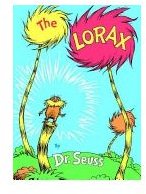Industrial Revolution Lesson Plan Using The Lorax by Dr. Seuss
Make Learning Fun
The Industrial Revolution in the United States was in the 19th century and the beginning of factories, railroads, and assembly lines. Many people saw the benefits of industry–new careers, faster ways of making products, and easier transport of goods across the country. Other people saw the disadvantages–pollution, tradesmen being replaced by factories, and low-quality goods.
The Lorax by Dr. Seuss is such a great example of both points of view, and children can often learn better from an entertaining picture book than a social studies text at any age. The Lorax stands for the view of the environmentalist, and the Once-ler is all about industry, money, and making his thneeds. You can use The Lorax to introduce the Industrial Revolution to students.
Lesson Plan Ideas
1. Teaching the Industrial Revolution begins before reading The Lorax by Dr. Seuss to students. Ask them to pay attention to what happens when the Once-ler first makes his thneed by hand and sells it for $3.98. What are the advantages and disadvantages of what the Once-ler does once he realizes his thneeds are a success? Explain to students they should be able to answer these questions when you are finished reading. For older students, they can jot down notes to help them remember.
2. When you finish reading the story, write on the board “The Industrial Revolution.” Explain to students that they are going to study this period in American history, and that The Lorax is a good example of some of the successes and failures of the Industrial Revolution.
3. Ask students to tell you what they noticed the Once-ler did once he knew his thneeds would sell. While teaching the Industrial Revolution, you should lead students in a discussion on the fact that the Once-ler made factories and automated machines to do everything faster. He also employed more people to help him. He could sell more thneeds if he had a factory and more workers, and he made a larger profit.
4. Ask students to tell you what some of the disadvantages were to the Once-ler’s plan in The Lorax by Dr. Seuss. Students should answer that he polluted the air and water, and he cut down all the trees. Several animals were driven away from their homes. Teaching the Industrial Revolution must include the advantages and disadvantages of assembly lines and factories.
5. Discuss with students if they believe the effects of the factory were acceptable or if the Once-ler should have tried to do things differently but still make this thneeds.
6. Summarize for students what they will be learning about factories, assembly lines, rules, and regulations that occurred during the Industrial Revolution and how it will be similar to some of the events they read in The Lorax.
